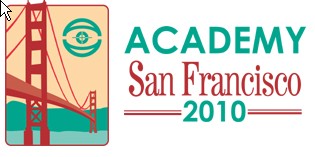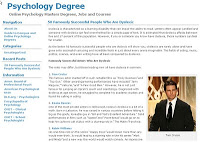CHICAGO - The
Illinois Eye Institute (IEI) has launched
Chicago Vision Outreach, a pilot initiative that will improve eye care for patients in desperate need. The program will connect optometrists to underserved patients who suffer from vision and eye care problems often caused by chronic illnesses such as diabetes. This community-focused initiative, which will dramatically increase accessibility to eye care to many Chicago residents, is supported by a total of $350,000 in private grants.
“We identified thousands of underserved patients who desperately need eye care in Chicago,” said Leonard Messner, O.D., executive director of the Illinois Eye Institute. “This initiative brings eye care directly to people suffering most, and who are least likely to receive it.” Many of these patients have vision problems brought on by complicated eye diseases such as glaucoma or diabetic retinopathy. The Centers for Disease Control and Prevention indicates the prevalence of vision disorders among underserved adults was a staggering 26 percent in 2007.
IEI has a tradition of treating patients regardless of their ability to pay and has become a safety net eye care provider for uninsured or under-insured Chicagoans. With Federally Qualified Health Centers (FQHCs) fast becoming the medical homes for these populations, frontline vision and eye care services need to be included in the primary healthcare services offered at these sites. If optometric services are provided, patients benefit and experience a significant increase in access to critical vision and eye care services.
The pilot program has started at the Alivio Medical Center in the Pilsen neighborhood on Chicago’s South Side. It will expand in several weeks to another Federally Qualified Health Center (FQHC), Erie Family Health Center in Humboldt Park. Additional participants are expected to come on board as the program rolls out.
“Alivio has worked diligently for the past several years with the Illinois Eye Institute to access eye care for patients,” said Carmen Velasquez, executive director of Alivio Medical Center. “We, at Alivio, are very pleased with this wonderful collaboration.”
The cost of undiagnosed eye problems is stunning. A report from Prevent Blindness America estimates the total annual impact of eye diseases at $51.4 billion in 2007. The Economic Impact of Vision Problems arrives at the total by citing two studies. The first, by KD Frick, et al, estimates at $35.4 billion annually the financial burden of visual impairment and blindness to individual caregivers and other healthcare payers. The second, by David Rein, et al, estimates the burden of vision problems to the U.S. economy at $16 billion a year.
Early diagnosis and treatment of these illnesses is key to controlling national healthcare costs. Yet, currently, only 20 percent of FQHCs in the U.S. offer optometry services. The pilot is financed by seed grant funding from the Lloyd A. Fry Foundation, The Chicago Community Trust, Alcon Foundation and Blue Cross and Blue Shield of Illinois. The program fills a crucial need because only about five percent of eye care providers in Chicago accept patients who are uninsured or have Medicaid.
As the clinical training facility of the
Illinois College of Optometry (ICO), the Illinois Eye Institute will use this initiative to train tomorrow’s doctors how to address the diverse challenges of a patient population that desperately needs preventive eye care. This program gives ICO students a new opportunity to work in the community and treat underserved patients. This philosophy exemplifies ICO leadership within the healthcare community, where medical and dental schools are moving toward deploying students in community health centers to reach underserved patients.
About the
Illinois Eye Institute Illinois Eye Institute (IEI) is the clinical division of the
Illinois College of Optometry. IEI is a nonprofit, multi-specialty eye center that provides comprehensive eye care to individuals of all ages from the Chicago area and beyond, regardless of their financial status. It is designed and staffed to meet general ocular health and visual needs and provide highly specialized optical services. The IEI has over 90,000 visits annually from a largely low-income, medically underserved patient population and provides charitable services and outreach programs through its foundation to assist people in need. For more information about the Illinois Eye Institute, visit
www.illinoiseyeinstitute.com.















